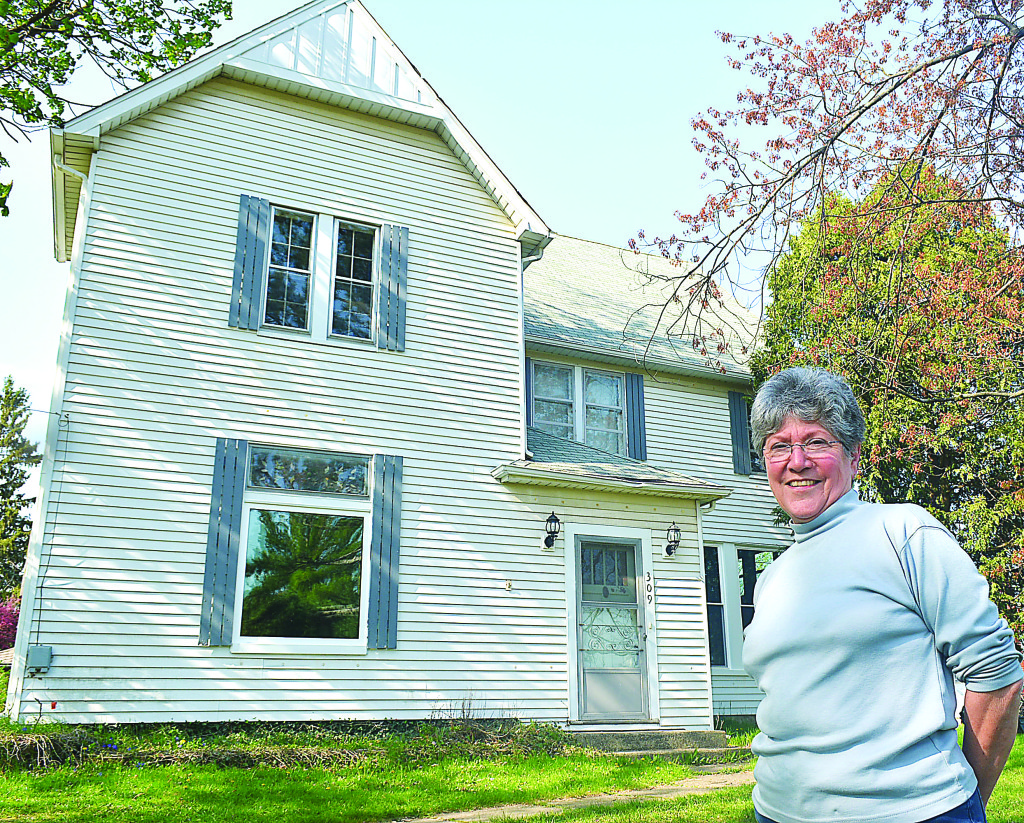
Many things cause the buildings and homes that help define a small town’s past to disappear over the years.
Fires, natural disasters, neglect, building codes, the wrecking ball, economic decline and the march of progress all take their toll on the local history that’s written not in words, but in lumber, glass, brick and mortar.
The Village of Leonard, incorporated in 1889, does not want to see its past erased, so a historic committee has been formed.
Its first meeting will be held on Tuesday, May 9 at 7 p.m. in historic Rowland Hall, located at 23 E. Elmwood St. Members are being sought and those with an interest in the town’s history are invited to attend.
“We’re trying our best to save what we have,” said Leonard Councilwoman Char Sutherby, who serves on the committee.
The committee plans to research the histories of the village’s oldest homes and provide that information to current and future property owners in the hopes they will “see the value of preserving them as opposed to tearing them down,” she explained. The committee would also direct residents to resources that can help them restore their homes in ways that are in keeping with the period during which they were built.
“If they know the history, they’re more apt to do that,” said Sutherby, a Leonard resident for 47 years.
There are 45 homes in Leonard that are at least 100 years old based on records provided to Sutherby by Addison Township. Twelve of them were built between 1870 and 1900. Twenty-nine of them were constructed in 1901.
Leonard’s two oldest homes were built in 1870. They’re located at 4701 Forest St. and 309 E. Elmwood St.
Sutherby admitted Leonard doesn’t have the same level of historic homes, in terms of both numbers and grandeur, as nearby Romeo and Oxford Village do.
“But there is beauty in the homes we have here and there is value. People see them every day, but they don’t see the beauty,” she said. “I’m hoping to make people more aware of the historic value that we do have in this town.”
Sutherby is greatly concerned about Leonard’s future. She noted how, in recent years, the town’s one-and-only gas station closed along with one of its two downtown markets.
“I’m afraid it’s going to continue to go that way if we don’t start turning negatives into positives,” she said.
It may seem hard to believe but Leonard wasn’t always a sleepy little town where the only thing that gets people to stop on a regular basis is the flashing red traffic signal at the main intersection downtown.
Back in the late 19th and early 20th centuries, industry was booming thanks to the railroad that ran through town (today, it’s the Polly Ann Trail). Trains made it easy to ship local products such as lumber, cattle and produce. That same railroad also brought items to Leonard residents, including fish from Saginaw Bay and mail-order goods.
Leonard had a sawmill, grain elevator, beanery, fruit evaporator/apple dryer and a factory that produced grape, fruit and potato baskets. The sawmill cut nearly 2 million feet of lumber annually in the late 1800s, according to a local history entitled “The Addison Album,” written by Barbara D. Stafford and published in 2000. At one time, the town had a bank and hotel, both bearing its name, as well as a track for horse racing.
Incidentally, the village is named after Leonard Rowland, “a shrewd and enterprising farmer,” as Stafford called him, who divided his property and created the original plat for the town, which was recorded in December 1884. “In appreciation for making the first land available” for homes and buildings, the village would henceforth bear Rowland’s first name, according to “The Addison Album.”
But the days of trains puffing black smoke and industry humming along are long gone and the Leonard of 2017 is a quiet, but charming commuter town known for its annual Strawberry Festival in July and the Polly Ann Trail, a recreational path used by walkers, runners, bicyclists and horseback riders.
“We’re so small and we’ve lost so much,” Sutherby said. “I don’t want to lose anymore.”
Folks interested in joining the historic committee can call Sutherby at (248) 628-5924.

Leave a Reply